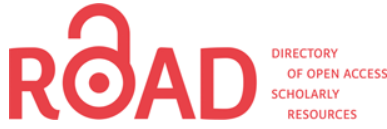- Editorial Board
- Aims and Scope
- Peer Review Process
- Publication Ethics
- Open Access Policy
- Plagiarism Policy
- Indexing
- License Term
- Manuscript Template
- Archiving Policy
- Complaints Policy
- Copyright and Licensing Policy
- Correction, Retraction, Withdrawal Policies
- Creative Commons License
- Publication Ethics and Malpractice Statement
- Article Processing Charge
- Authors Guidelines
- Reviewer Guidelines
PEER REVIEW POLICY
process of peer review
Initial evaluation and decision
The Editor-in-Chief and Managing Editor will first evaluate all submissions received by the Iraqi Journal of Scientific and Engineering Research Editorial Board to determine whether they adhere to the guidelines outlined in the Author Guide in terms of formatting, the journal’s ethical policies, and the scope of the journal. We will return submissions that do not adhere to the author’s criteria for manuscript formatting requirements. We will give associated authors one week to edit and resubmit these submissions. The editor-in-chief will reject submissions that do not adhere to the ethical policies and the journal’s scope without further peer review. The editor-in-chief will send the submissions to the plagiarism checker (Turnitin) if he deems them suitable for publication. Submissions with less than 20% plagiarism will be subject to peer review. Otherwise, we will reject them and return them to the author to correct any plagiarism.
Peer Review
The identity and affiliations of both authors and reviewers remain confidential throughout the double-blind peer review process of the Iraqi Journal of Scientific and Engineering Research. Once the manuscript has successfully passed the initial screening, the section editor delegated it to the editor-in-chief, who will assess its scientific relevance and suggest appropriate reviewers within the subject area of the article. The editor-in-chief will assign the manuscript to at least two independent experts for evaluation, which may or may not include a member of the editorial board or a reviewer recommended by the authors. The designated reviewers have the authority to accept or decline participation in the review process based on the title and abstract of the manuscript.
The reviewers will evaluate the paper and submit their reports and recommendations to the editor-in-chief within two to three weeks.
- Approval
- Acceptance with minor revisions.
- Acceptance with major revisions.
- Rejection
If one reviewer strongly advocates for rejecting or accepting the manuscript, but the other reviewer has a significantly different opinion, the editor-in-chief will seek the opinion of a third reviewer to make a final decision on whether to reject, accept, or modify the article.
The timeline for the initial phase of the review process is generally 6 to 8 weeks, with a maximum of 3 months.
The corresponding author(s) will receive manuscripts for review along with the reviewer's comments. The corresponding author(s) must submit the revised manuscript to the Editorial Board within two weeks. We will consider manuscripts received beyond the specified review date as withdrawn. A request for an extension will be considered acceptable if submitted before the deadline for review of the manuscript. Corresponding authors must address the reviewer’s comments in a thorough and detailed manner. Authors who correspond with a reviewer must explicitly address any disagreement with the reviewer’s comments. The editor-in-chief will then send the revised manuscript to the managing editor to verify that it complies with the reviewer’s recommendations.
Final Decision
After careful evaluation of all reviewer comments, the editor-in-chief will make one of the following final decisions:
- Publication
The manuscript will receive publication approval if the editor-in-chief recommends "Publish"
- Accept with minor modifications.
If the reviewers recommend "Accept with Minor Modifications," the editor-in-chief instructs the authors to revise their manuscripts accordingly and submit the final version. Only the editor-in-chief reviews the revised manuscript after the authors make the minor changes. The editor-in-chief may approve the final work once satisfied.
- Major revisions are required.
For the manuscript to be eligible for publication, it must undergo additional revision after review by the author(s). We will ask the authors to submit the revised version again within a two-week period and then send it to the same reviewers. Upon receipt of the updated manuscript, the editor-in-chief has the authority to suggest one of three options: “Publish”, “Minor Modifications Required” or “Reject.”
- Rejection
If the editor-in-chief recommends rejection of the manuscript, it will be immediate. Furthermore, if two reviewers suggest rejecting the submission, we will act immediately. Editors have the authority to reject any article based on its topical inappropriateness, lack of originality, inaccurate findings, or failure to contribute to the existing body of knowledge.
Author Appeals
The corresponding authors will receive the specific reasons for rejection if the editor-in-chief rejects a submitted paper. Authors who appeal against the decision should present thorough and detailed justifications, systematically addressing each reviewer or editor's comment. The editor-in-chief will evaluate the appeal and deliberate with the journal editors to make an advisory recommendation on the article. The recommendation may be to accept the submission, to subject it to additional peer review, or to uphold the initial decision to reject it. Rejected decisions are final and unchangeable.
Publishing
Upon acceptance of the submission, the editor-in-chief will send an acceptance note to the corresponding authors. Before submission to the publisher, the technical editor will review and format the paper.









